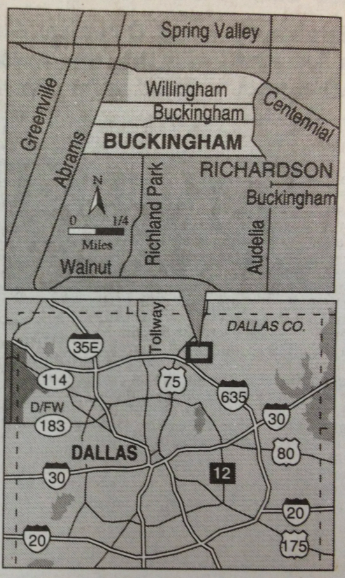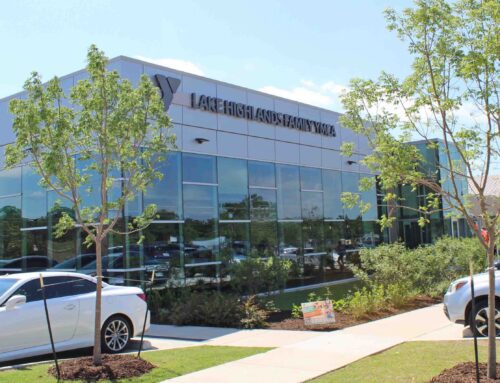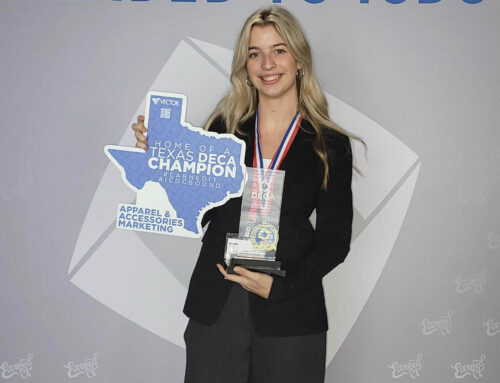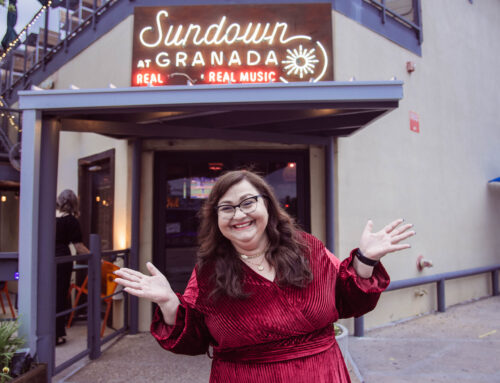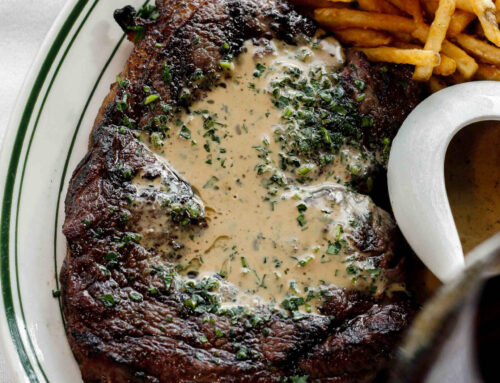Ask for directions near the tiny neighborhood of Buckingham and you might hear something like, “Turn left when you see the second liquor store.” But the neighborhood’s plethora of booze isn’t the only thing that makes it unique.
Despite Buckingham’s Lake Highlands connection (it straddles our northern border), it is mostly defined by a contentious relationship with the city of Richardson. Buckingham was once a city within a city, a 0.25-square-mile plot wholly contained within Richardson, which finally annexed the town in 1996. In 1985 this neighborhood was a site fought over by developers, garnering articles in the New York Times and USA Today. These days, few people even know it exists.
Richardson took center stage in Buckingham’s history, but 1978 Lake Highlands High School graduate C.W. Kendall III held the strings. The “Boy Who Put Buckingham on the Block,” as Dallas Life Magazine dubbed him in its 1984 article, was twice involved in purchasing the community land and still has ties to it.
At 18 years old, Kendall earned his real estate license. At 19, he began dreaming of turning the farmland into high-rise apartments, offices and retail. Building this mini-Addison meant convincing the 64 landowners, many of whom had lived there since the land was first developed in 1945, to sell. At more than $500,000 per 2-acre lot, all but two lots sold to developer Michael Block by 1985, with Kendall brokering the deal.
In January 1984, one week after Block closed on most of the properties, the town voted 55-27 to allow the sale of liquor which Kendall says increased revenue for Buckingham and brought “a lot of traffic” — literally. Cars reportedly frequented Abrams Road as residents of dry Richardson sought out spirits.
This real estate-mecca success story didn’t pan out as expected, though. In 1987, a few years after Block bought Buckingham, the stock market crashed, sending the town into bankruptcy. Cue Kendall.
“In hindsight, [the original plans] were a little grandiose,” Kendall says.
He joined with attorneys to create a group, Whitehall Development Company, to buy the town out of bankruptcy.
As late as 1995, Buckingham is reported as a “ghost town” comprised of empty or razed houses, despite the $20 million Michael Block originally spent on improvements. Today, Kendall calls the neighborhood a successful development, citing its multi- and single-family homes, retail and senior housing. People live, eat and shop in spaces where horses used to roam. According to Kendall, 97 percent of Buckingham land has been developed though a few “straggler lots” still await commercial zoning.
“[Buckingham] will always be special to me,” Kendall says. “It was a big deal at the time. It was something that impacted my career at a very young age.”
Nearly 30 years later, Kendall owns a commercial real estate investment company in Richardson where he lives with his wife, high school sweetheart Sharon, and roots for the Lake Highlands Wildcats. He still sits on Whitehall Development’s board of directors.
Liquor stores are still disproportionately common in Buckingham. Richardson now allows the sale of beer and wine, but when people want something harder, they know where to head.

